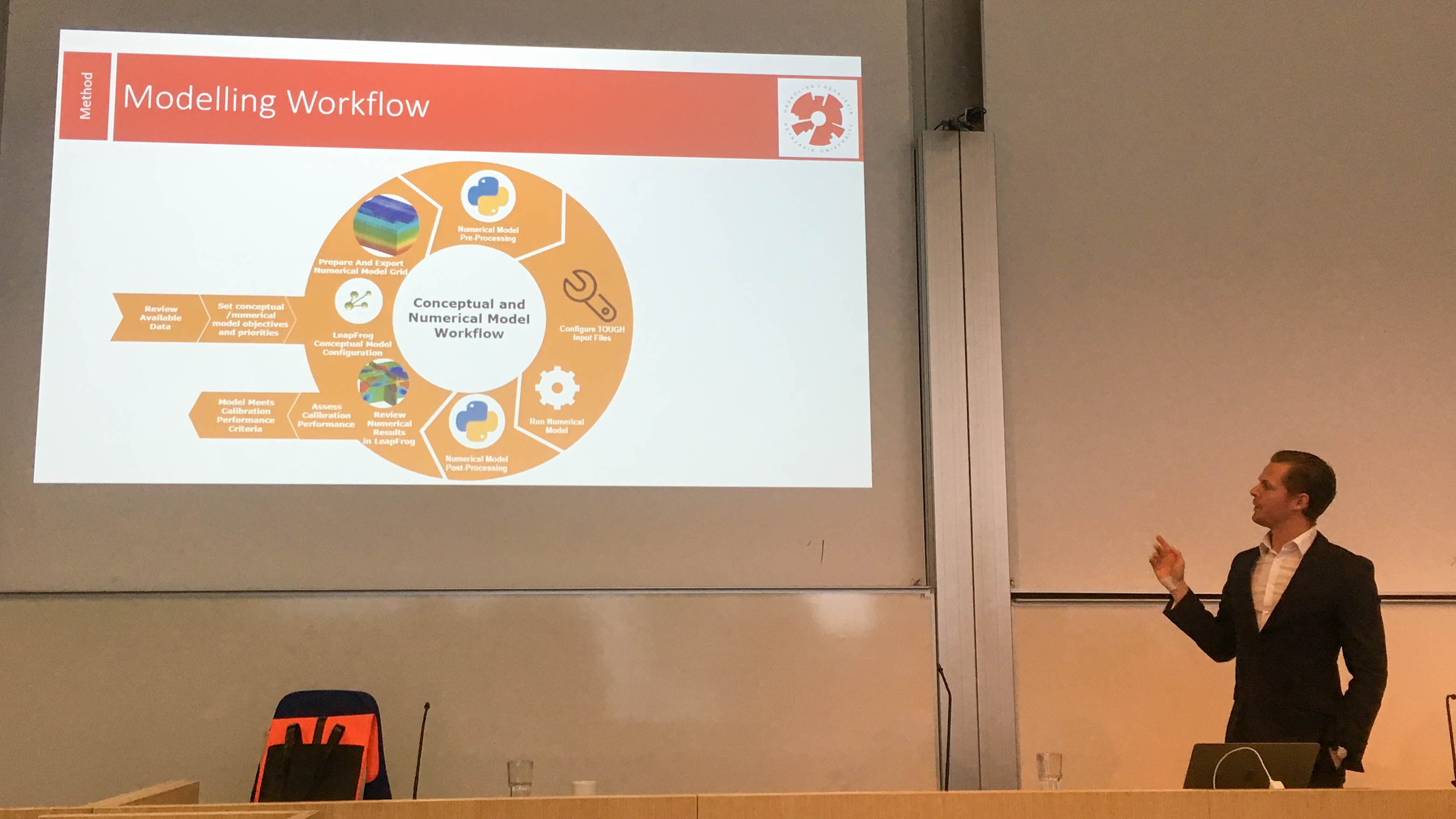MSc Thesis: Combined conceptual and supercritical numerical model of the Reykjanes peninsula
REYKJAVIK, June 07 - MSc in Sustainable Energy Engineering candidate, Sam Alexander Barton, successfully defends his master's thesis where he developed a combined conceptual model and supercritical numerical model of the Reykjanes peninsula. Sam's research was supervised by Juliet Newson from Reykjavik University, and John O' Sullivan from the University of Auckland.

Sam sets the stage by stating the importance of both conceptual and numerical modelling for geothermal systems, and show how they have become an invaluable tools for successful exploration, utilisation and long term management of geothermal resources. Put simply, these tools provide valuable input needed to make informed decisions for the sustainable utilisation of these resources.
As Sam explains, with increased interest and subsequent exploration of the roots of high-temperature geothermal systems, modelling technology and techniques are rapidly evolving to accurately represent the conditions found at these great depths. Sam focused his efforts on a geothermal system in the Reykjanes peninsula, which is located in South-West Iceland. This system is the landward extension of the divergent plate boundary of the mid-Atlantic ridge. It is home to three geothermal systems namely Reykjanes, Eldvörp and Svartsengi, two of which are being utilised for electricity and heat production.
Sam's study investigated a workflow used to develop a new combined regional conceptual and supercritical numerical model of the Reykjanes Peninsula. It encompassed multiple geothermal reservoirs and aimed to simulate the hot deeper roots of these systems. Sam created a regional conceptual model in LeapFrog based on divergent plate boundary theory and the regional volcanology to develop a lithological profile. His conceptual model was then directly used to setup a new TOUGH supercritical numerical model to a maximum depth of 7km. Sam calibrated the model by adjusting a 450 C iso-surface within the sheeted-dyke complex in the base of the system to generate the geothermal plumes. These plumes were then successfully temperature and pressure matched to the measured conditions in the known geothermal systems of Reykjanes, Svartsengi and Eldvörp. Sam's work successfully developed a large scale conceptual and supercritical numerical model encompassing multiple geothermal systems at great depths utilising a guiding workflow. His model creates a strong platform for further investigation into areas such as the interaction between neighbouring geothermal systems or the long term regional impacts of production.
Congratulations Sam on an excellent thesis project!
